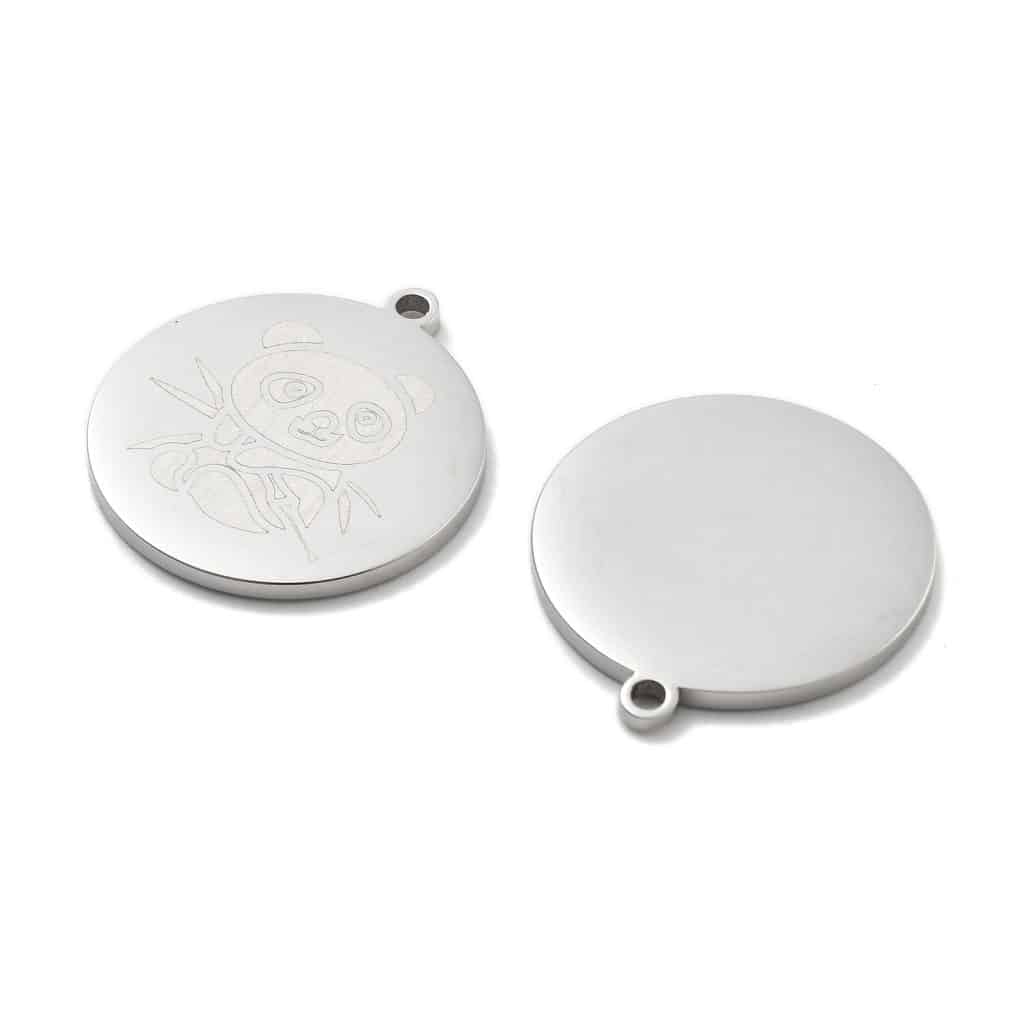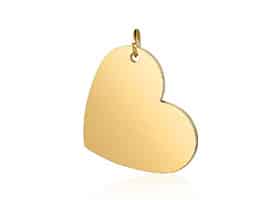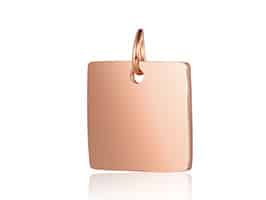Table of Contents
Etching Secrets: How to Create a Custom Pendant
Creating a custom pendant is a rewarding and personal project that allows you to bring your unique vision to life. Whether you’re crafting a keepsake for a loved one or making a statement piece for yourself, etching a pendant offers a timeless and elegant finish. In this comprehensive guide, we’ll delve into the secrets of etching a custom pendant, covering everything from design preparation to final polishing. By the end, you’ll be ready to create stunning etched pendants that reflect your creativity and skill.

1. Understanding the Basics of Etching
What is Etching?
Etching is a technique used to create designs on metal surfaces by removing material to form depressions. These depressions can then be filled with ink or another contrasting material to highlight the design. The process is centuries old and has been refined through various techniques, including acid etching, laser etching, and hand etching.
Materials Needed for Etching a Custom Pendant
Before we dive into the steps, let’s gather the materials you’ll need:
- Metal Pendant Blank: Choose a pendant blank made of a suitable metal such as copper, brass, silver, or steel. Each metal has unique properties and reacts differently to etching techniques.
- Etching Solutions: Options include ferric chloride, nitric acid, or commercial etching creams. Ensure you work in a well-ventilated area and wear appropriate safety gear.
- Etching Tools: Depending on your method, you might need etching needles, lasers, or rotary tools with diamond-tipped burs.
- Design Templates: These can be hand-drawn or digitally created and then transferred onto the pendant surface.
- Protective Gear: Safety glasses, rubber gloves, and a respirator are essential to protect yourself from harmful chemicals and particles.
- Polishing Supplies: Once etched, you’ll need to polish the pendant to bring out the shine and highlight the etched design.
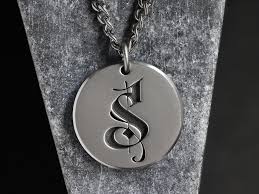
Choosing the Right Metal
- Copper and Brass: These metals are softer and easier to etch, making them ideal for beginners.
- Silver and Gold: While more expensive, these precious metals offer a beautiful finish and are highly durable.
- Steel: Harder metals require more precise tools and can be challenging to etch but offer a unique aesthetic.
2. Preparing Your Design
Design Creation
The first step in creating a custom pendant is designing your artwork. You can sketch your ideas by hand or use graphic design software for more intricate designs. Once you have a final design, you’ll need to transfer it onto your pendant blank.
Transferring the Design
Hand Drawing:
For simple designs, you can draw directly onto the metal using a fine-tip marker or etching ink. This method allows for spontaneity and personalization.
Using Carbon Paper:
For more complex designs, carbon paper can help transfer your drawing from paper to metal. Simply place the carbon paper between your design and the pendant, then trace over the lines with a pencil or ballpoint pen.
Digital Transfers:
For digital designs, you can use a method called toner transfer. Print your design onto a special toner transfer sheet, then use an iron to transfer the toner onto the metal surface. This method offers high precision and is ideal for intricate patterns.
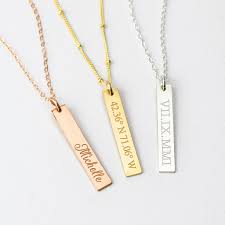
3. Setting Up Your Workspace
Safety First
Working with etching solutions can be dangerous if not handled properly. Always wear rubber gloves, safety glasses, and a respirator to protect yourself from harmful chemicals and particles.
Ventilation
Work in a well-ventilated area or set up a fume extractor to ensure that harmful vapors are not inhaled.
Work Surface
Use a stable, flat surface to work on. A protected workspace, such as a plastic cutting mat, can help prevent etching solutions from damaging your tabletop.
4. The Etching Process
Hand Etching
Hand etching involves using a variety of tools to scratch or carve your design into the metal. Common tools include:
- Etching Needles: These fine tools allow for intricate details.
- Dremel or Rotary Tools: Equipped with diamond-tipped burs, these tools can quickly remove metal.
Steps:
- Secure Your Pendant: Use clamping tools or a vice to hold your pendant steady during etching.
- Apply Pressure Evenly: Light, even pressure will create cleaner lines.
- Check Progress Frequently: Periodically lift your tool to check the depth of your etching.
Chemical Etching
Chemical etching uses acids or other etching solutions to dissolve the metal along your design lines.
Steps:
- Apply Etching Resist: Use a resist like nail polish or etching resist ink to cover the areas you don’t want etched.
- Apply Etching Solution: Carefully brush or pour the etching solution onto the exposed metal.
- Monitor the Reaction: Check frequently to avoid over-etching. The time required will depend on the metal type and the solution used.
- Neutralize and Rinse: Once the desired etching depth is achieved, neutralize the etching solution with baking soda and water, then rinse thoroughly.
- Remove the Resist: Peel or wash off the resist to reveal your etched design.
Laser Etching
Laser etching uses a laser beam to vaporize the metal surface along your design lines. This method offers precision and can be done quickly.
Steps:
- Prepare Your Design: Use software compatible with your laser etcher to create or import your design.
- Set Parameters: Adjust the laser’s settings based on the metal type and desired etching depth.
- Place Your Pendant: Secure your pendant in the laser etcher’s workspace.
- Run the Etching: Start the laser etching process and let it run to completion.
5. Finishing Your Pendant
Cleaning
After etching, clean your pendant thoroughly to remove any residue from the etching process. Use warm water and mild soap, then rinse and dry completely.
Polishing
Polishing your pendant will enhance its appearance and bring out the details of your etched design.
Steps:
- Use a Polishing Compound: Apply a suitable polishing compound to a soft cloth or polishing wheel.
- Apply Gentle Pressure: Rub the compound into the metal using gentle, circular motions.
- Inspect Regularly: Periodically check your progress to avoid over-polishing and removing etched details.
- Final Rinse and Dry: Rinse the pendant under clean water and dry it with a soft cloth.
Sealing (Optional)
To protect your etched design from tarnishing or wear, you can apply a clear, protective coating such as a lacquer or clear nail polish.
6. Adding a Bail or Chain
Attaching a Bail
A bail is a small loop or hook that attaches your pendant to a chain. You can purchase pre-made bails or create your own.
Steps:
- Choose a Bail: Ensure it complements the style of your pendant.
- Attach the Bail: Use jewelry-making tools such as pliers to securely attach the bail to the pendant.
Choosing a Chain
The chain you choose should complement the pendant’s design and be strong enough to support its weight.
Options:
- Metal Type: Match the chain’s metal type to the pendant for a cohesive look.
- Length: Choose a length that suits your style and intended use.
- Clasp Type: Ensure the clasp is secure and easy to use.
7. Customizing with Color
Oxidizing
Oxidizing can add depth and contrast to your etched design by darkening the etched areas.
Steps:
- Apply Oxidizing Solution: Use a brush to apply a liver of sulfur or another oxidizing agent to the etched areas.
- Let It Sit: Allow the solution to react with the metal for the desired amount of time.
- Neutralize and Rinse: Rinse the pendant under water and neutralize the oxidizing solution with baking soda.
- Dry and Polish: Dry the pendant and polish to enhance the contrast between etched and non-etched areas.
Patina Techniques
A patina is a surface discoloration that can add an aged or antique look to your pendant. You can apply patinas using chemicals or heat treatments.
8. Displaying and Wearing Your Pendant
Creating a Display
If your pendant is a keepsake or gift, consider creating a custom display.
Options:
- Shadow Box: A small, decorative box with a glass front can showcase your pendant beautifully.
- Necklace Display Stand: These stands allow you to display multiple necklaces, including your custom pendant.
Wearing Your Pendant
Finally, enjoy wearing your custom pendant! Whether it’s a daily accessory or a special-occasion piece, your etched pendant will add a personal touch to your outfit
Click here for more information about wristbands: https://www.topwristband.com
Reference Website:https://www.democratandchronicle.com/story/money/business/2013/12/06/nanorosetta-uses-tech-to-fit-entire-bible-on-pendants/3894311/
